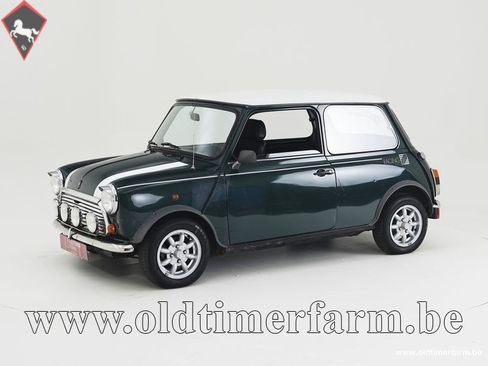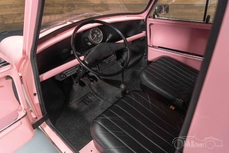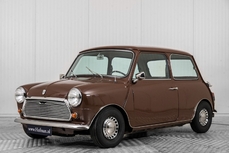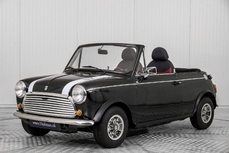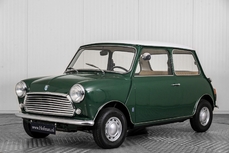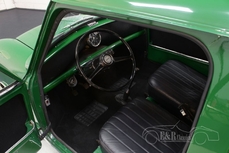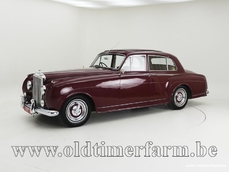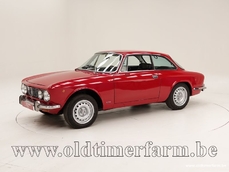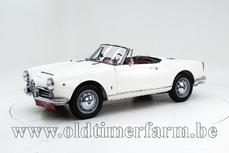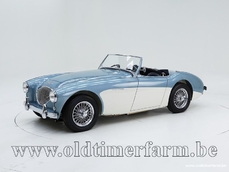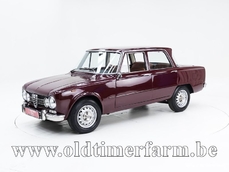Mini 1000 '89 1989
Allgemeine Beschreibung :
The perfect bicolour for a British car: British Racing Green and a white roof Sporty look: viper stripes and twin-exhaust For a real Mini aficionado The Mini, a small car with a big story. In 1959, British car manufacturer British Motor Corporation (BMC) released the Mini, it is obvious that they had a clear goal in mind: releasing a small city-fit car with a cute design. Thanks to The Beatles and its starring in countless famous films, the car has acquired an iconic status over the decades. It was Alec Issigonis, a British-Greek car designer that worked for BMC, who gave birth to the Mini. He had a clear goal in mind: to create an affordable and fuel-efficient car that is efficient and light-steering in narrow British city streets. This approach, along with the playful design, created a true hype among young people. The Mini also became extremely popular with influential people, to the point that all members of The Beatles - John Lennon, Paul McCartney, George Harrison, and Ringo Starr - proudly show off their Minis. In 1969, the car takes on the leading role in the film The Italian Job, in which bank robbers used a Mini as a getaway car. Also Mr. Bean’s car is a lime green 1977 Mini, which emphasizes his clumsiness in the best way possible. Initially, the Mini was manufactured in various finishes, such as a sedan, a station wagon, a van, and even a pickup truck. Those finishes never really became fancied among the crowd. Also, in the 1980s, the Mini began losing its fame due to fierce competition from other car brands. This caused a harsh financial crisis in 1986 at British Leyland - the former BMC that also own Jaguar, Rover, Triumph, and MG. They even decide to restructure and privatize the company and from that moment on Rover Group was born. In 1994, Rover Group sells Mini to BMW, which seven years later, in 2001, launch a refined version of the Mini. Nowadays BMW still produce the Mini – baring its British identity in mind – and it is available in various finishes: a convertible, a fully electric version, a hybrid version, a sports version, and even a station wagon. As mentioned before, the goal was to build a city car that fit in traffic in cities, therefore they had to use as little space as possible, that was a real challenge in the middle of the 20th century. The 1950s are often considered a tipping point in automotive technology, and the Mini has contributed to that tipping point: a front-wheel drive car with a transverse and space-saving engine that is highly responsive and fit to city traffic. Today, the Mini is a coveted classic car, and not only among classic car enthusiasts. The cute and vulnerable design simply captures everyone's hearts. British Racing Green British Racing Green - dark green in various shades - is not just one of many colours for the English; it is inseparably linked to British roaring and fast racing cars, or, on the other hand, regular British city cars like for example a Mini. For years on end, it has been a tradition for the British to appear on the racing scene in this not-so-flashy, but undeniably British, colour. It is the quintessential British color, alongside the colours of the world-famous Union Jack. British Racing Green was first seen in 1903 when the British Races Selwyn Francis Edge won the influential Bennett Cup in 1902 and thus had the pleasure of organizing that race in his own country, the UK. In the UK, the legal speed limit at the time was 12 miles per hour - which is about 20 kilometres per hour - not exactly a speed for racing cars. That's why the race was instead organized in Ireland in 1903, and the British drivers expressed appreciation to the Irish by painting their cars in, you might have guessed it, dark green, derived from Irish green. Since then, ‘British Racing Green’ has become a term and it has acquired cult status in the following decades – and centuries? - even beyond the racetrack. Technical information: Body work Length (cm): 305 (120 inch) Width (cm): 141 (56 inch) Height (cm): 135 (53 inch) Wheelbase (cm): 204 (80 inch) Weight (kg): 620 (1367 lbs) Mechanics Engine: transversally mounted 998 cc straight-four front-engine Valve gear: 8 Fuel system: 1 SU carburettor Gear box: 4-speed manual Transmission: FWD Left-steered power: 39 hp (29 kW) at 5250 t/m torque: 68 Nm at 2600 t/m Top speed: 132 km/h (82 mph)
1989 Mini 1000 '89 is listed zu verkaufen on ClassicDigest in Aalter by Oldtimerfarm for €7350.
Fakten der Auto
Karosserietyp : Auto Marke : Mini Modell : 1000 Ausführung : '89 Hubraum : 0.0 Modelljahr : 1989 Lage : Aalter Fahrzeug Anmeldung : Undefiniert
7350 €
People who viewed this Mini 1000 also viewed similar Mini listed at ClassicDigest
Other cars listed for sale by this dealer
über Mini
Der Mini ist zweifellos ein ikonisches Auto, das die Automobilindustrie revolutioniert hat und den Standard für Kompaktwagen gesetzt hat. Hier ist eine kurze Geschichte des Mini, seiner Entwicklung und einiger wichtiger Versionen des klassischen Mini:1. Ursprünge und Entwicklung:
Gründer und Designer: Der Mini wurde von Sir Alec Issigonis, einem britisch-griechischen Automobilingenieur, entworfen.
Einführung: Der Mini wurde 1959 offiziell von der British Motor Corporation (BMC) vorgestellt.
Innovatives Design: Issigonis' Design umfasste einen Quermotor, Frontantrieb und ein kompaktes Layout, das den Innenraum maximieren sollte.
2. Klassische Mini-Modelle:
Mark I (1959–1967):
Mini Cooper (1961): Die leistungsorientierte Cooper-Version, in Zusammenarbeit mit dem Rennlegenden John Cooper entwickelt, wurde eingeführt.
Mark II (1967–1970):
Geringfügige Designänderungen, einschließlich eines neu gestalteten Kühlergrills.
Mark III (1969–2000):
Einführung der Varianten Clubman und Clubman Estate.
Weitere Designaktualisierungen, einschließlich eines abgerundeteren vorderen Kühlergrills.
3. Mini Cooper S:
Leistungsvariante: Der Mini Cooper S, insbesondere die Version Mk I, wurde durch seinen Erfolg bei Rallye-Rennen bekannt und gewann mehrmals die Rallye Monte Carlo.
4. Mini Moke:
Nutzfahrzeug: Der Mini Moke war ein Nutzfahrzeug auf Basis des Mini-Plattformkonzepts mit offenem Verdeck. Er wurde in verschiedenen warmen Regionen populär.
5. Mini Countryman:
Verlängerte Version: Der Mini Countryman wurde als längere und praktischere Version des klassischen Mini eingeführt. Er verfügte über eine rückwärts öffnende Tür für einen leichteren Zugang zu den Rücksitzen.
6. Ende der Produktion:
Spätere Jahre: Die Produktion des klassischen Mini lief bis zum Jahr 2000 weiter.
Abschlusseditionen: Der letzte klassische Mini verließ die Produktionslinie am 4. Oktober 2000 und markierte das Ende einer Ära.
7. BMW-Ära und neuer MINI:
BMW-Übernahme: BMW erwarb die Rechte an der Marke Mini und führte 2001 den neuen MINI ein.
Moderne Interpretation: Der neue MINI behielt einige Designelemente des klassischen Mini bei, verfügte jedoch über moderne Technologie und Sicherheitsstandards.
8. Erbe und Einfluss:
Kulturelles Symbol: Der klassische Mini wurde zu einem kulturellen Symbol, das britisches Design und Effizienz verkörpert.
Einfluss auf Kompaktwagen: Das Layout und die Designprinzipien des Mini beeinflussten die Entwicklung von Kompaktwagen für Jahrzehnte.
Die Auswirkungen des Mini auf die Automobilindustrie gehen über seine kompakte Größe hinaus. Er repräsentiert eine Designphilosophie, die auf Effizienz, Raumnutzung und Fahrspaß setzt. Die anhaltende Beliebtheit des klassischen Mini ist ein Beweis für sein zeitloses Design und innovative Ingenieurskunst.
